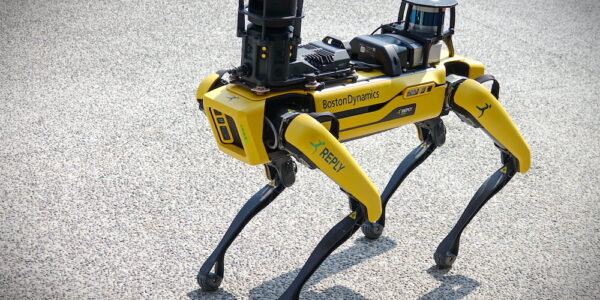Spot is a four-legged robot developed by Boston Dynamics. It has been designed to perform various tasks such as inspection, surveying, and exploration, among others. However, with some modifications, it could also operate as a biped robot using its front legs for manipulation of objects instead of locomotion. Researchers at Carnegie Mellon University and UC Berkeley are training Spot to use its forelegs like arms, to manipulate objects, while its back legs are used for stability and balance. This extension of Spot’s abilities could increase the versatility not only of this particular robot, but of robots in general.
To understand how Spot could operate as a biped robot, we need to examine its design and capabilities. Spot has four legs that are equipped with joint actuators and sensors, allowing it to move efficiently in various terrains. Its legs also have a high degree of flexibility and can be used for different purposes such as climbing stairs, walking over uneven surfaces, and even dancing.
To modify Spot for optimal bipedal operation, we would need to adjust its center of gravity. This would require reprogramming the robot’s control system to coordinate the movement of its legs and ensure stability while standing on two legs. We would also need to equip the front legs with end-effectors such as grippers, sensors, or cameras, to enable them to manipulate objects.
Once Spot is equipped with the necessary modifications, it could be used for a wide range of tasks that require manipulation of objects. For example, it could be used in manufacturing plants to move materials, assemble parts, and perform quality control checks. It could also be used in hospitals to assist doctors and nurses in handling medical equipment or in warehouses to handle and pack products.
Four legs good
One advantage of using Spot as a bipedal robot is its mobility. Unlike traditional industrial robots that are typically fixed in one location, Spot can move around, making it ideal for tasks that require a robot to move between workstations or navigate through narrow spaces. Its high degree of flexibility also means that it can adapt to different tasks and environments, making it a versatile tool for various industries.
Another advantage of using Spot as a bipedal robot is its ability to interact with humans. With its advanced sensors and cameras, Spot can detect and respond to human gestures and commands. This could make it an ideal tool for collaborative tasks that require human-robot interaction, such as in research laboratories, where Spot could assist scientists in performing experiments or collecting data.
However, there are also some challenges associated with modifying Spot for bipedal operation. One of the main challenges is ensuring stability while it is standing on two legs. Unlike four-legged robots, bipedal robots have a higher risk of losing balance and falling over. To overcome this challenge, we would need to develop sophisticated algorithms that could predict and compensate for any changes in the robot’s environment. It would need to learn to shift between quadrupedal movement when traveling around a space and bipedal movement for, say, operating an elevator or pitching in with production tasks.
One of the important messages from this project might be that humanoid robots are not the only possibility for general purpose robots. A canine form might work just as well, or even better.
Image courtesy of Adobe



